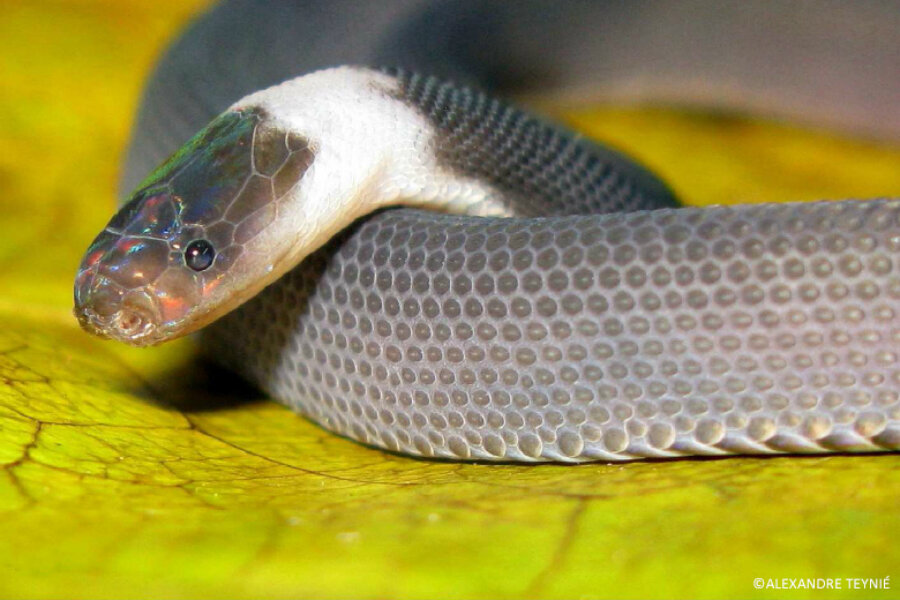'Klingon' newts, 'Ziggy Stardust' snakes among 163 new Mekong species
Loading...
The Greater Mekong region of Southeast Asia has long been considered a biological treasure trove, teeming with rare and unusual creatures. Last year's discoveries of 163 new species reaffirmed that designation.
Mouse-shaped flowers and dragon-like lizards were among those identified in 2015 along the Mekong River, which runs through Myanmar, Laos, Thailand, Cambodia, Vietnam, and parts of China. On Monday, the World Wide Fund for Nature (WWF) highlighted these plants and animals in a new report intended to draw attention to threats of development and illegal wildlife trading.
“The Greater Mekong region is a magnet for the world’s conservation scientists because of the incredible diversity of species that continue to be discovered here,” Jimmy Borah, Wildlife Programme Manager for WWF-Greater Mekong, said in a statement. “These scientists, the unsung heroes of the planet, know they are racing against time to ensure that these newly discovered species are protected and saved.”
The discoveries included nine amphibians, 11 fish, 14 reptiles, three mammals, and more than 120 plant species. It was a glimmer of hope in a region under pressure from development and poaching, where conservationists fear many species could be lost before they are even found.
Among the most eye-catching discoveries was Parafimbrios lao, a rainbow-headed snake indigenous to Laos. The snake, whose dental layout and unusual coloration warranted the designation of a completely new genus, is only known to be found in a single small region. That’s not great news, said discoverer Alexandre Teynié, of the French National Institute for Agricultural Research, since “the locality of Parafimbrios lao is already undergoing significant changes and destruction.”
Another was Tylototriton anguliceps, only the fourth newt species ever discovered in Thailand. With a dark coloration and a ridged forehead, this little amphibian has drawn comparisons to the fictional Klingons of the “Star Trek” universe.
In many cases, it’s still unclear whether these newly discovered species are actually threatened or endangered. But by properly identifying them, researchers can better inform policy decisions and conservation efforts. Eventually, genetic profiles of these rare species might even help put a dent in the illegal wildlife trade.
As Heather Millar reported for Yale Environment 360:
The developing science of wildlife forensics... makes it possible for investigators to perform tests that were just dreams a decade or two ago. Separating out genetic and chemical markers from physical samples such as rhino horn or a piece of rosewood, forensic scientists can often tell the age of the sample, exactly where the animal or plant came from, what its parentage might be, and how this relates to other seized shipments. Sometimes, forensic scientists can even shed light on the structure of the criminal networks behind the trade by showing where poached animals and plants are killed, and what ports are used to transport them.
That could be critical in the Greater Mekong, since the region’s impressive biodiversity makes it a prime target for poachers.
“Many collectors are willing to pay thousands of dollars or more for the rarest, most unique and most endangered species, often buying them at the region’s illegal wildlife markets, especially in the Golden Triangle region where China, Laos, Thailand and Myanmar meet,” Mr. Borah said. “To save them, it’s crucial that we improve enforcement against poaching and close illegal wildlife markets as well as the tiger and bear farms that openly flaunt wildlife laws.”
[Editor's note: An earlier version slightly understated the number of new species discovered.]






